All products featured are independently chosen by us. However, SoundGuys may receive a commission on orders placed through its retail links. See our ethics statement.
The best wireless earbuds 2025: Take great sound with you anywhere
June 17, 2025
True wireless earbuds have revolutionized personal audio since their inception. In 2025, the market offers an unprecedented range of high-quality options, from industry leaders like Apple, Sony, and Bose to innovative newcomers. With advanced features such as active noise canceling (ANC), seamless device integration, and AI-enhanced sound customization, today’s wireless earbuds are more than just audio devices—they’re smart wearables that complement our daily lives. Whether you’re an audiophile, fitness enthusiast, or busy professional, our guide to the best wireless earbuds will help you find the perfect pair for your needs and budget.
We’ve tested over 300 pairs of wireless earbuds in our lab throughout the years. Below, you can dig into how each pick is backed up by objective data we have gathered using standardized tests in controlled conditions to measure the frequency response and how well it matches our preference curve, noise attenuation, and battery life. We also provide sound quality scores produced by a virtual panel of listeners, as modeled by the MDAQS algorithm, as well as microphone demonstrations in a variety of simulated conditions. We do all this to provide data you can use to make an informed choice about the best wireless earbuds for your needs. Whether that is the best earbuds for working out, the best earbuds for listening to music, or the best earbuds for blocking out noise, this list has you covered.
- June 17, 2025: We added video breakdown of the best wireless earbuds of 2025, and we added the CMF Buds 2 Plus as the top budget pick.
- May 14, 2025: Updated formatting and added the Sony WF-C710N, Soundcore Liberty 5, Creative Aurvana Ace Mimi, and Powerbeats Pro 2. We removed the obsolete Jabra Elite 10 Gen 2 and Jabra Elite 8 Active Gen 2.
The Quick Answer
For a quick guide to the best wireless earbuds that suit your needs and budget, check out our top picks below. Each has a link to our full review.
The best overall:
The best for iPhone:
The best for noise canceling on a budget:
The best for features:
The best value pick:
The best sound quality pick:
The best workout pick:
Best wireless earbuds overall: Sony WF-1000XM5


The Sony WF-1000XM5 stands out as a top-tier choice in the competitive world of noise canceling earbuds. They are 25% smaller and 20% lighter than the previous WF-1000XM4, featuring a redesigned shape with more angled nozzles and flexible ear tips, of which you get four sets. All of which makes them a whole heck of a lot more comfortable and secure.
As for active noise cancellation (ANC), the WF-1000XM5 is one of the best in its class. Equipped with new processors and improved microphone systems, our testing shows that these earbuds effectively attenuate low-frequency noise by over 30 dB, resulting in an 87% reduction in perceived noise.
While the default sound profile leans towards a bass-heavy signature, the overall audio quality is excellent. The earbuds offer a wider soundstage and good clarity. Sony’s LDAC codec support also ensures high-quality audio streaming for compatible devices. Other features include customizable touch controls and multipoint connectivity. The Sony Headphones Connect app allows for extensive customization, including EQ adjustments and adaptive sound control.
Read our full Sony WF-1000XM5 review
Best earbuds for iPhone owners: Apple AirPods Pro 2


The Apple AirPods Pro 2 are the premier choice for iPhone users. They seamlessly integrate with the Apple ecosystem and offer a slew of exclusive features, such as easy pairing, automatic switching between devices, and Adaptive Transparency mode. Thanks to the new H2 chip, the Active Noise Cancellation (ANC) performance is the best for AirPods so far. The AirPods Pro 2 effectively attenuate low-frequency noise by 20-30dB, translating to an 83% reduction in perceived noise, according to our testing.
Sound quality is excellent, with a slight emphasis on bass that most users will appreciate. The wider soundstage and good clarity across frequencies make for an enjoyable listening experience. The inclusion of personalized Spatial Audio and support for the AAC codec ensures high-fidelity audio for iOS devices. We do wish there was a customizable EQ in the Apple settings app, however.
Battery life has been improved, though it still lags behind the competitors. With ANC enabled, it offers over 6 hours of playback according to our tests, and the case provides an additional 24 hours. The case now features a speaker for easier location tracking and supports MagSafe, Qi wireless, and Apple Watch charging.
If the $249 price tag is too steep for you, there are a handful of solid iPhone earbuds or AirPods Pro alternatives out there for iPhone and Android users alike. You can even snag the first-gen AirPods Pro for on the product's website.
Read our full Apple AirPods Pro 2 review
The best earbuds for noise canceling on a budget: Sony WF-C710N


The Sony WF-C710N offer a compelling blend of features for their mid-range price. In our testing, they delivered reliable active noise canceling that punches well above their weight, with strong passive isolation and ANC combining to reduce noise by an average of 85%. Their sound quality is also impressive for the price — we measured an excellent overall MDAQS score of 4.8. Out of the box, they have a slightly dark tuning, but Sony’s Headphones Connect app lets you fix that with EQ presets or a custom five-band equalizer. Battery life clocks in at over 9 hours per charge based on our tests, and the pill-shaped case is ultra-pocketable. Just don’t expect premium Bluetooth codec support — these only offer SBC and AAC.
While I found the WF-C710N comfortable for long listening sessions, their fit isn’t the most secure. With only three ear tip sizes and no fins or wings, they’re not ideal for workouts, despite the IPX4 water resistance. On the plus side, you still get touch controls, adaptive sound modes, and spatial audio support via Sony 360 Reality Audio (though content is limited). Microphone quality is good enough for calls in most environments, and the lack of wireless charging is forgivable at this price. If you’re after great ANC and solid sound without spending flagship money, the Sony WF-C710N are easy to recommend — especially if you stick to more casual, everyday listening.
Read our full Sony WF-C710N review
Best features on wireless earbuds: JBL Tour Pro 3

The JBL Tour Pro 3 represent a significant leap forward in wireless earbud technology. The standout feature is the Smart Charging Case, which boasts a touchscreen display for easy access to functions like ANC control, EQ settings, and even acts as an audio transmitter for wired sources.
The sound of the JBL Tour Pro 3 is definitely geared toward a more consumer-friendly audience. The earbuds support multiple codecs, including LDAC and LC3, ensuring high-quality audio streaming. While the default sound signature has a slight bass emphasis, the 10-band EQ in the app allows for precise customization.
Due to the large size of the earbuds, comfort may vary, but multiple ear tip options are provided. The Active Noise Cancellation (ANC) performs very well, quieting about 83-84% of outside noise.
Overall, the JBL Tour Pro 3 offers a feature-rich package that’s hard to beat, making it an excellent choice for tech enthusiasts who want the most advanced and future-proof earbuds available, though it will cost you a pretty penny.
Read our full JBL Tour Pro 3 review
Best wireless earbuds under $100: CMF Buds 2 Plus


The CMF Buds 2 Plus are a solid value in terms of audio performance, battery life, and personalization features, especially considering their sub-$100 price. With high-resolution LDAC codec support, a refined sound signature, and Smart Adaptive ANC, these earbuds deliver premium experiences at a budget price. The Personal Sound feature, powered by Audiodo, customizes the EQ to your hearing profile, while a refined build and reliable touch controls round out the hardware experience. While the ANC doesn’t quite hit the advertised 50dB reduction, it still performs admirably across a range of environments. The sound quality is also up to par, as the earbuds earn a commendable 4.8 overall score in our MDAQS testing.
However, the CMF Buds 2 Plus stumbles by removing the Smart Dial, a standout feature from the Buds Pro 2 that offered intuitive tactile control. The new lanyard-style dial feels like a downgrade in both form and function, making the Plus version feel less premium despite technical improvements. For existing CMF Buds Pro 2 owners, the upgrade may not be compelling enough unless personalized sound is a must-have. Yet for new buyers, these earbuds set a new benchmark in their price tier, making them an easy recommendation.
Read our full CMF Buds 2 Plus review
The wireless earbuds with the best sound quality: Creative Aurvana Ace Mimi

The Creative Aurvana Ace Mimi stand out for one big reason: sound quality and personalization. Using Mimi’s hearing test technology, these earbuds tailor their sound to your hearing profile, which helped me uncover details I didn’t know I was missing. Combined with the xMEMS drivers, the Ace Mimi deliver a detailed audio experience with standout clarity in the mids and highs. Out of the box, the tuning leans bass-heavy — I noticed it on tracks like “Bad Guy” by Billie Eilish — but you can easily dial it back using the 10-band EQ or one of the 40+ presets in the Creative app. According to MDAQS scoring, these earbuds rank among the best we’ve ever tested, earning near-perfect marks for Timbre and Immersiveness.
Comfort is another strong point: at just 4.7g each, with five ear tip sizes and an IPX5 rating, the Ace Mimi held up well during long sessions and workouts. Noise canceling isn’t class-leading, but it’s solid enough for daily use, and the Ambient Mode impressed me with how naturally it amplified my surroundings. While the earbuds last just under 5 hours with ANC enabled, wireless charging and LDAC support help round out the feature set. At $129.99, the Creative Aurvana Ace Mimi offer flagship-level sound and customization at a mid-range price—making them one of the best value picks for audio-first listeners.
Read our full Creative Aurvana Ace Mimi review
Best wireless earbuds for working out or running: Powerbeats Pro 2


The Powerbeats Pro 2 mark a strong return for one of the most iconic workout earbuds, now updated with features like heart-rate monitoring, active noise canceling, and Apple’s H2 chip. In my testing, I found the secure ear hook design perfect for intense workouts—these earbuds didn’t budge, even during sprints or circuit training. The addition of ANC significantly improves sound isolation, and the heart-rate sensor—while not essential for everyone—could be a game-changer for serious athletes. That said, there’s no Bluetooth Multipoint, and the sound quality drops noticeably when ANC is disabled. Still, for iPhone users in particular, these are some of the most seamless and feature-rich workout earbuds you can buy in 2025.
However, all that tech comes at a steep price. At $249.99, the Powerbeats Pro 2 aren’t exactly a budget pick. If you just want solid workout performance without extras like heart-rate tracking, options like the Beats Fit Pro or Jaybird Vista 2 offer better value. If you’re a data-driven athlete, the Sennheiser MOMENTUM Sport provides even more biometric tracking—but at an even higher price. Ultimately, the Powerbeats Pro 2 earn their spot on our best workout earbuds list thanks to their rock-solid fit, long battery life, and Apple ecosystem perks, even if they’re not the best deal for every user.
Read our full Powerbeats Pro 2 review
The best wireless earbuds: Notable mentions
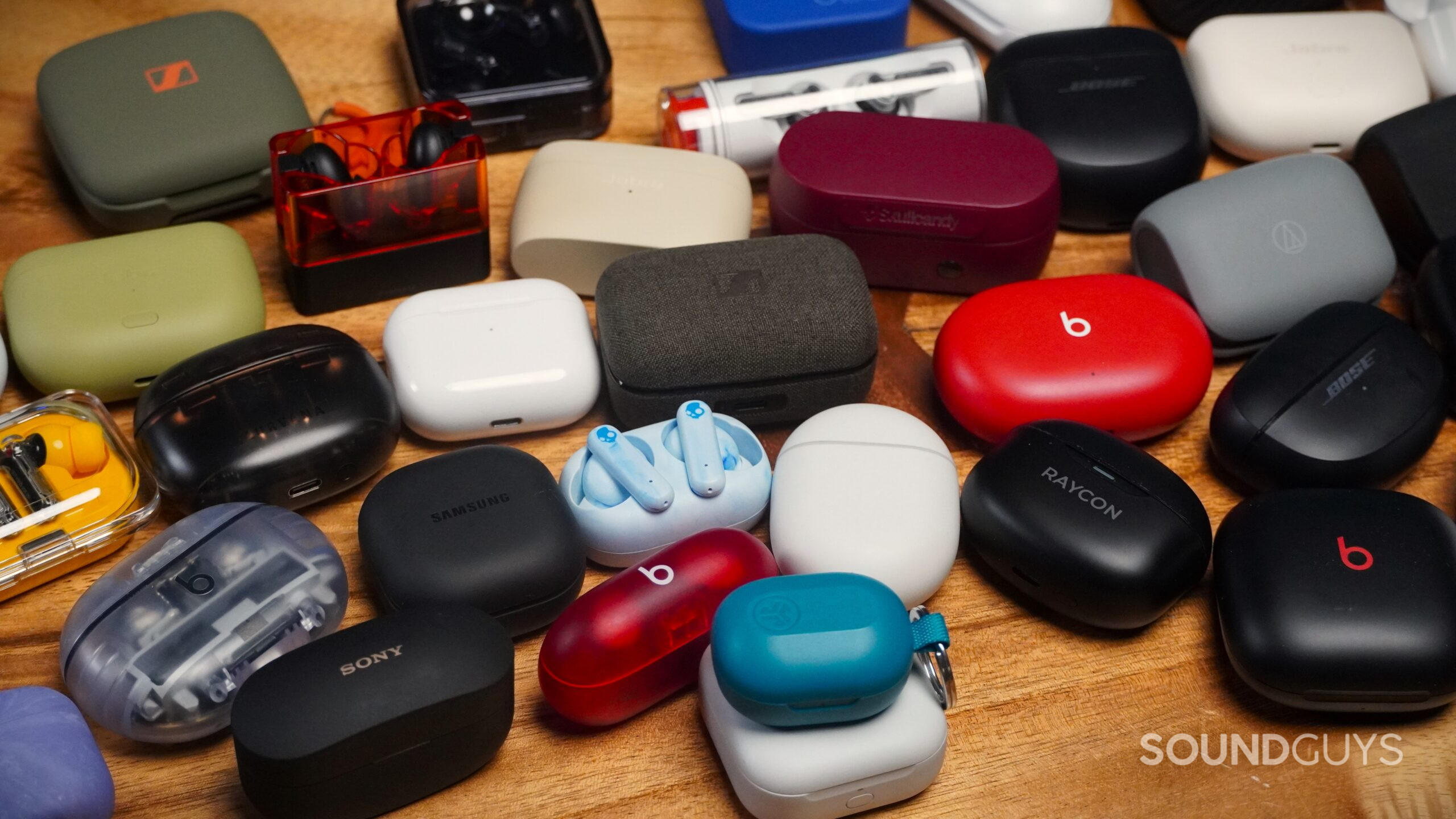
- Anker Soundcore Liberty 4 NC ($99.99 at Amazon): These are definitely a contender for some of the best affordable noise canceling earbuds based on performance and value. With an IPX4 rating, long battery life, and good ANC, these are worth a go. You might not want to go for a run with them, but otherwise, they’re decent.
- Anker Soundcore Liberty 4 Pro ($129.99 at Amazon): When it comes to extensive features and performance at a price that doesn’t break the bank, it’s hard to beat the Liberty 4 Pro.
- Apple AirPods 4 ($129 at Amazon): The AirPods 4 are a noticeable upgrade over their predecessors. If possible, try them on before buying, as your experience will be heavily dependent on whether or not the new shape of the AirPods fits your ears.
- Apple Airpods 4 with ANC ($179.99 at Amazon): The Apple AirPods 4 with Active Noise Cancellation is a great effort to bring ANC to unsealed AirPods — though it’s still not everyone’s cup of tea. AirPods fans will love the new earbuds, though newcomers might not understand the hype.
- Beats Studio Buds Plus ($169 at Amazon): The Beats Studio Buds Plus are a competent, if slightly understated true wireless option for those who don’t want the AirPods Pro. Additionally, this Apple-owned product offers an alternative to the lollipop design of the AirPods earphones.
- Bowers & Wilkins Pi8 ($399 at Amazon): The Bowers & Wilkins Pi8 are luxury earbuds that cost a pretty penny. If you want great sound quality and noise canceling wrapped in a luxury finish, these earbuds might be for you.
- Bose QuietComfort Earbuds ($179 at Amazon): These earbuds deliver excellent sound quality and noise canceling at an affordable price. The only thing holding us back from a stronger recommendation is the connectivity issues we experienced while testing them.
- Bose QuietComfort Ultra Earbuds ($299 at Amazon): A step up from the regular Bose QuietComfort Earbuds, the Bose QuietComfort Ultra Earbuds have a few extra features such as immersive audio and improved connectivity tech.
- Creative Aurvana Ace 2 ($149.99 at Amazon): If you are in the market for the best-sounding wireless earbuds, consider the Creative Aurvana Ace 2. The xMEMS driver system sounds excellent, and you can customize the sound using the Creative app. Combined with aptX Lossless support, these earbuds will pique the interest of many audiophiles.
- CMF Buds Pro 2 (on the product's website): The CMF Buds Pro 2 punch well above their price point, offering solid sound quality and impressive ANC, with the innovative Smart Dial being the unexpected star of the show.
- EarFun Air Pro 4 ($89.99 at Amazon): If you are looking for the best wireless earbuds under $100, the EarFun Air Pro 4 are certainly a contender.
- Google Pixel Buds Pro 2($229 at Amazon): These are an excellent Pixel phone companion, offering a slew of useful improvements and features that the original Pixel Buds Pro do not. Though the new tuning might not satisfy bassheads, the EQ presets are good enough to handle just about any preference. Many people will love these earbuds.
- JLab Epic Lab Edition ($199.99 at Amazon): The JLab Epic Lab Edition are the testbed for the latest generation of Knowles balanced armature drivers, and they make a compelling case. Great sound quality paired with most of the top-flight features we expect from high-end earbuds make this one of the best buys in the category.
- JBL Live Beam 3 ($199.95 at Amazon): If you want features like a touchscreen case without having to pay an arm and a leg, the JBL Live Beam 3 are a good option.
- Moondrop Space Travel ($24.99 at Amazon): If you’re looking for bang for your buck, it’s hard to do better than these earbuds. Though they don’t have much in the way of software features, the Moondrop Space Travel offers excellent audio quality and ANC for under $30.
- Master & Dynamic MW09 ($349 at Amazon): Exceptional battery life and premium materials mean the Master & Dynamic MW09 is built to last a long time. You have to pay a pretty penny for these earbuds, but you’ll turn a few heads with the eye-catching design.
- Nothing Ear (a) ($95 at Amazon): If you have $100 to spend on earbuds, the Nothing Ear (a) are a good option. These jack-of-all-trades earbuds don’t excel in any particular way but also don’t have any major drawbacks.
- Nothing Ear ($149 at Amazon): The more expensive sibling to the Nothing Ear (a), the Nothing Ear are worth it for those who prioritize sound quality.
- Panasonic Technics EAH-AZ80 ($167.99 at Amazon): Though they’re quite large earbuds, the Technics EAH-AZ80 are very solid performers, with a rock-solid array of features to boot. Though the sound might not be for everyone, we believe most should really like these earbuds, even if they aren’t the consensus best-ever.
- SoundPEATS Capsule3 Pro+ ($89.99 at Amazon): The SoundPEATS Capsule3 Pro+ have xMEMS drivers that deliver exceptional sound quality, at a price that doesn’t break the bank.
- Sennheiser MOMENTUM True Wireless 4 ($269.95 at Amazon): The Sennheiser MOMENTUM True Wireless 4 have advanced features such as Bluetooth 5.4 with atpX Lossless.
How we test wireless earbuds
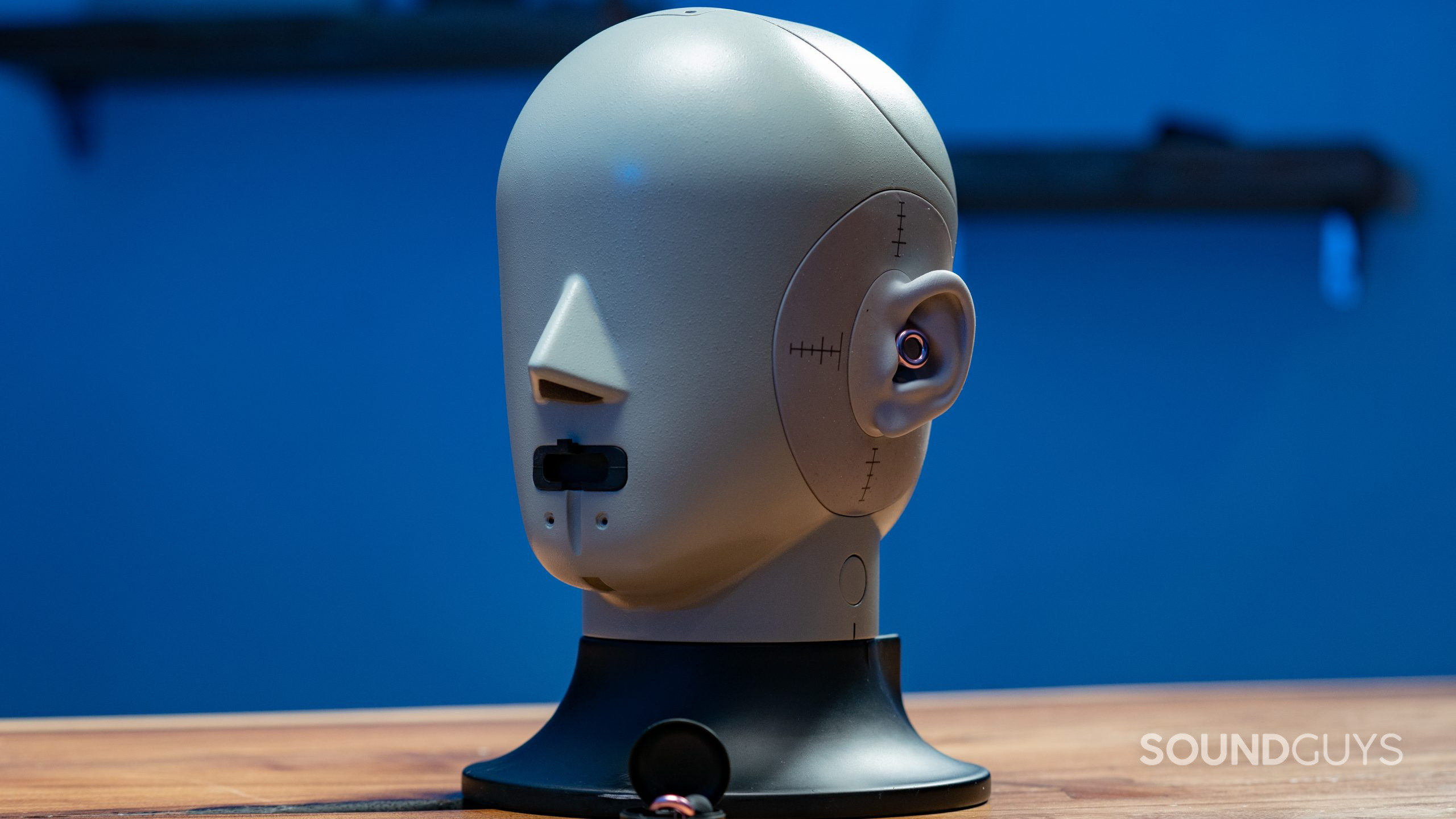
Using a dummy head, product designers can test out how audio products will perform for most people — and so do we. We run a number of tests, including frequency response, isolation, and battery life. You can read more about it here and learn more about the specifics.
- For each product, we played several sine sweeps through the earphones. Once we arrived at a representative result, we logged the frequency response, demonstrating the hallmarks of a good acoustic seal.
- To test isolation, we play a sample of shaped noise at 90dB(SPL) (measured at the eardrum), once with the headphones off and another with the headphones on. We then subtract one measurement from the other.
- To test the battery, we use shaped noise and a real-time analyzer to find the setting needed to output consistent audio peaking at 75dB(SPL) from the products. We play our music test track on an infinite loop. This means every result can be directly compared.
These three basic tests cover the biggest areas of concern with wireless earbuds. Remember that your battery life will vary if you tend to crank the volume. Additionally, you could squeak out better isolation performance if you use third-party tips on your earbuds.
We try to get as much hands-on time with products as possible before declaring them one of the best. This means that the products on this list have been put through our full review process. We also spend hours browsing through forums and discussions within the audio community. Even if we’ve already reviewed a product, we do this to get as much of a birds-eye view of the landscape as possible.
Why you should trust SoundGuys
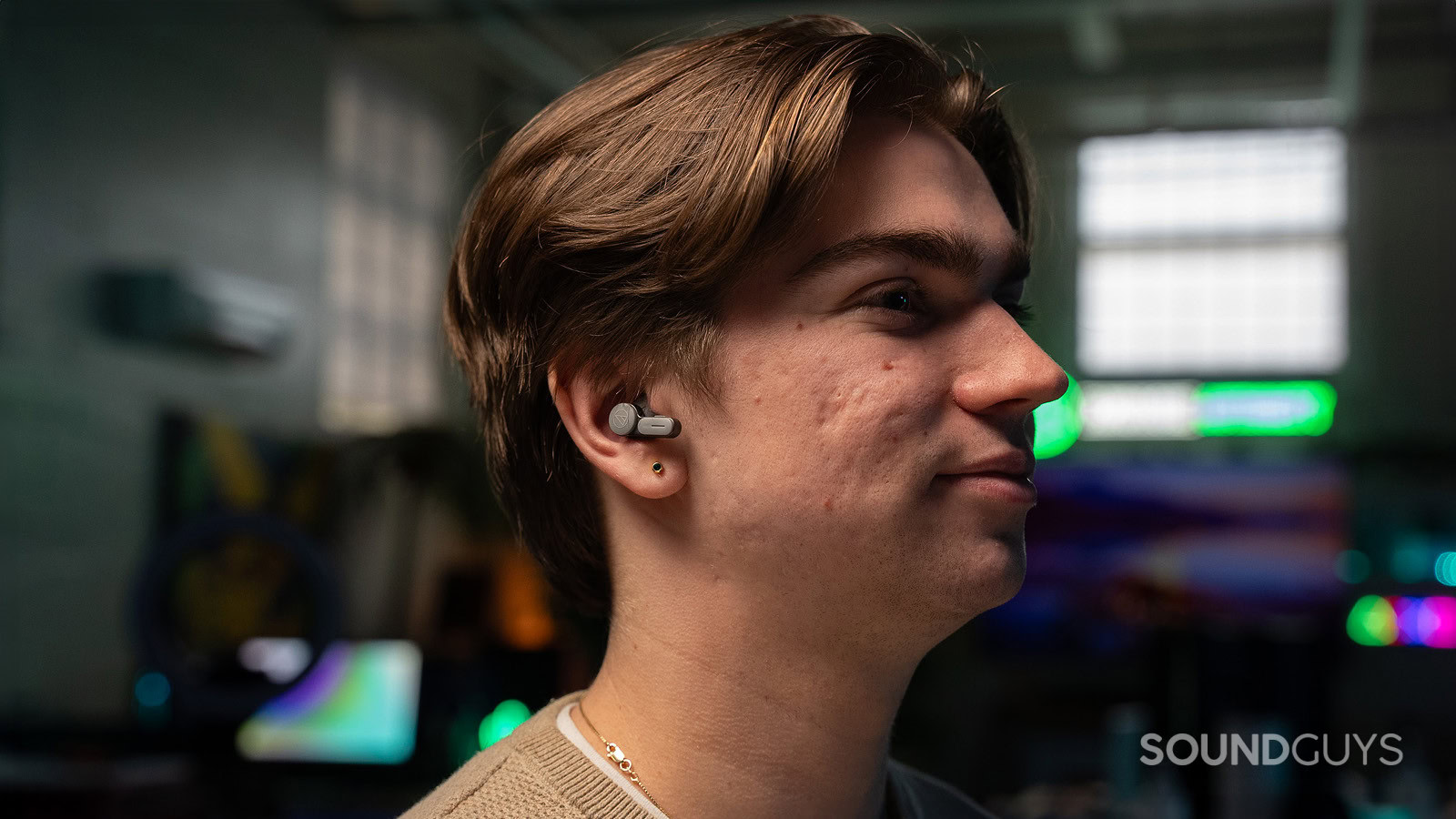
We’ve had our finger on the pulse of wireless earbuds since they hit the market. We pride ourselves on our ability to show our work and justify why we selected our picks. SoundGuys takes integrity very seriously.
Everything we recommend results from our objective measurements and great subjective experiences. Ultimately, we want you to enjoy your purchase or, at the very least, leave our site with a little more knowledge about the inner workings of audio.
Frequently asked questions
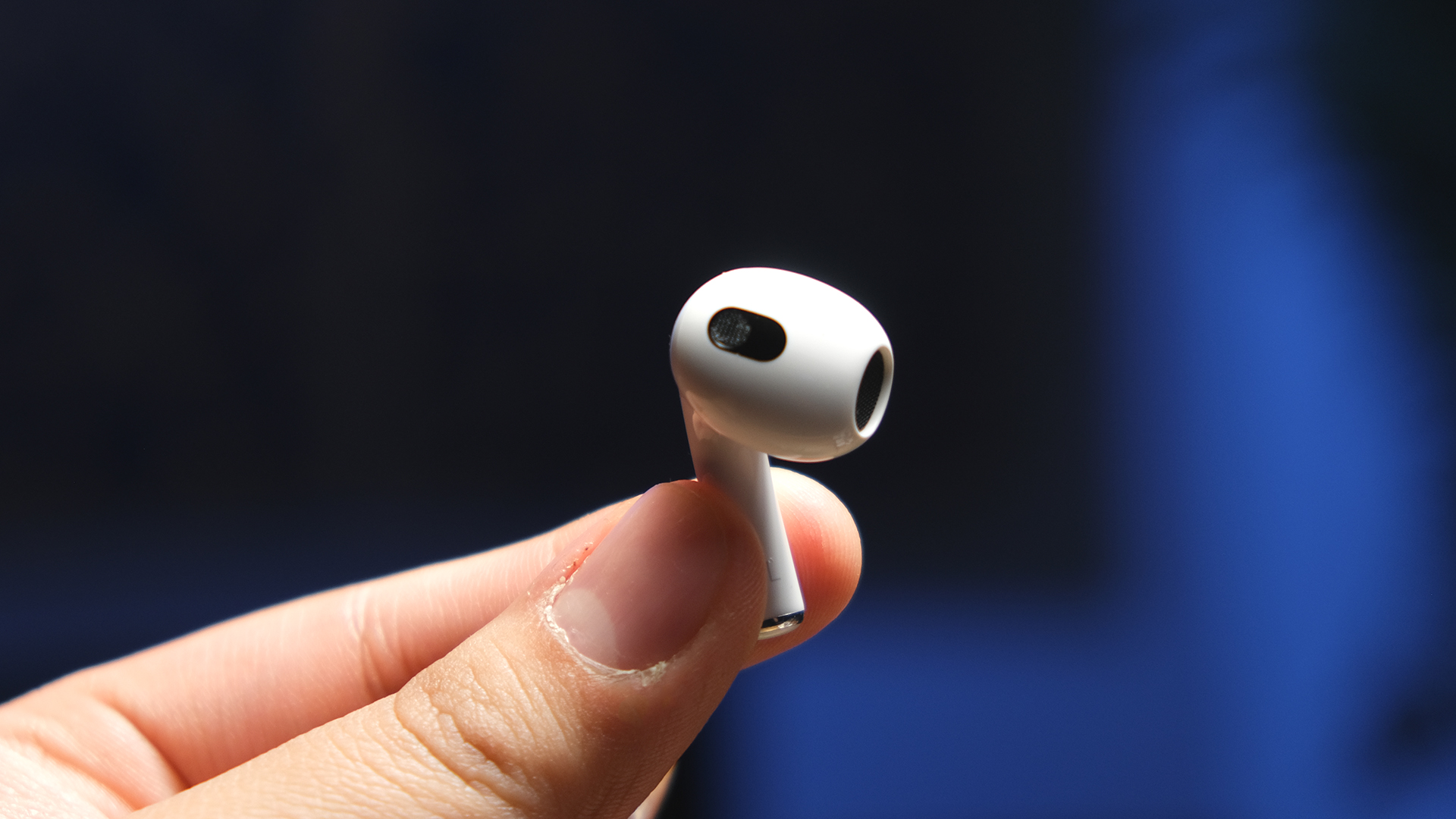
We’re witnessing a wireless epoch. It’s no longer niche or novel to listen completely untethered on your way to work. Technological advancements have lowered the financial barrier to entry, and cheap wireless options are readily available to budget listeners.
Wireless earbuds can still be for you if you don’t commute, especially if you like to exercise. Nothing’s more convenient than listening completely wire-free. There are many great wireless workout earbuds for runners and gym rats alike. Numerous companies have gone the extra mile by getting products officially IP certified, but they also integrate useful athletic features (e.g., ear hook design, silicone wing tips, Ambient Aware mode).
While it’s true that battery depletion is a problem, resulting in a shortened lifetime of wireless earbuds compared to their on-ear or over-ear headphone alternatives, you’re paying a premium for convenience. For some of us, it’s easy to justify the cost. Others may be better off with wired earbuds or dealing with bulkier wireless headphones.
Bluetooth Multipoint is a convenient feature that allows compatible headphones and earbuds to maintain simultaneous connections to multiple devices. This means you can seamlessly switch your audio source between, say, your laptop and smartphone without manually disconnecting from one before connecting to the other.
While convenient, Bluetooth Multipoint does have some limitations like audio quality constraints when streaming from two sources simultaneously. For a deeper dive into how it works and its pros and cons, check out our full explainer on Bluetooth Multipoint.
Generally speaking, the standalone battery life of wireless earbuds averages anywhere from three to six hours of battery life. Anything that falls above or below that is unusual. The charging cases typically provide an extra two to three charges, giving you at least 9 hours of total playtime. Check out our breakdown of how long AirPods last, including how you can make them last longer.
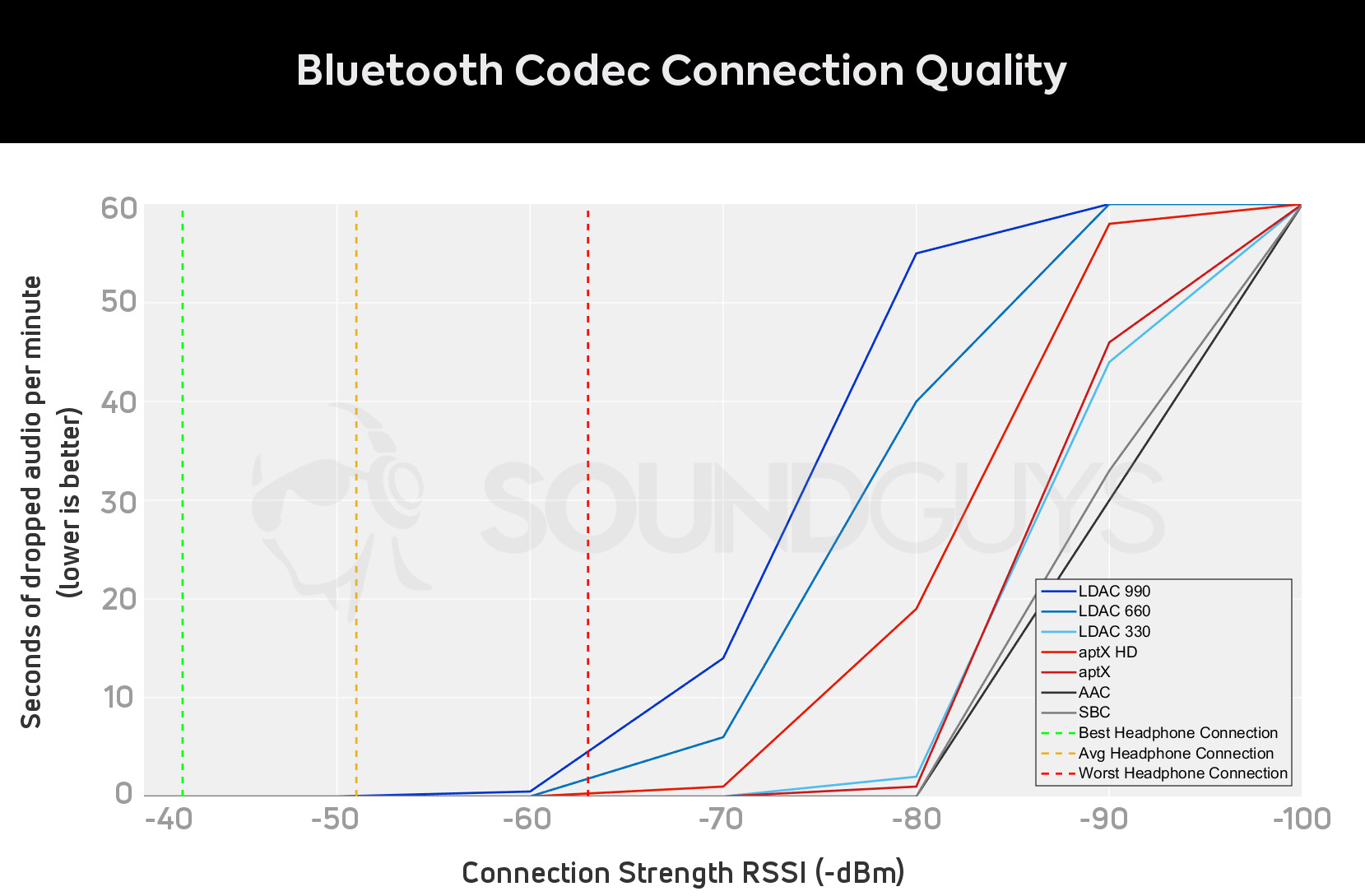
As with any nascent product category, early adopters will need to know a bit more about the tech that defines it. Namely, they need to know what to look for when deciding whether a product will be good or not. With Bluetooth audio, that means figuring out what Bluetooth codecs both their phone and their earbuds support.
As per our investigative testing, LDAC isn’t necessarily Hi-Res. What’s more, AAC is bunk when used on Android devices and should really only be used when listening via iPhone. If your Android phone automatically streams over AAC, you can always force developer settings to mandate SBC streaming instead. Android users, stick to aptX.
No, wireless earbuds use Bluetooth technology for wireless connectivity. Bluetooth is the standard that allows wireless earbuds to connect to devices without cables.
A good pair of wireless earbuds typically costs between $100 and $400. This range includes options with high-quality sound, reliable connectivity, and additional features like noise cancelation and water resistance. While there are cheaper alternatives available, they might compromise on sound quality, battery life, or durability. Investing at least $100 or more will generally ensure a balance between performance and value.
In terms of product lifespan, most wireless earbuds generally do not last more than three or four years, primarily due to battery degradation. Over time, these batteries lose their ability to hold a charge, leading to reduced playback time and eventually making the earbuds unusable. While some models might offer slightly better longevity due to the build quality, the small form factor inherently restricts their overall lifespan. To maximize the lifespan of wireless earbuds, it’s important to follow best practices for battery care, such as not exposing them to extreme temperatures and avoiding letting the battery fully deplete regularly.
With the vast array of wireless earbuds available, choosing the right pair can be daunting. Here are some key factors to consider when selecting the best wireless earbuds for your needs:
- Fit and Comfort: Proper fit is crucial for optimal sound quality and noise isolation. Look for earbuds that come with multiple ear tip sizes, especially for small ears, or offer a secure, customizable fit. Comfort is also essential, especially if you plan to wear them for extended periods.
- Sound Quality: Assess your audio preferences and prioritize earbuds with a sound signature that aligns with your taste. Review the frequency response and consider earbuds with customizable EQ settings if you prefer to fine-tune the sound.
- Noise Cancellation: If you plan to use your earbuds in noisy environments, active noise cancellation (ANC) can significantly improve your listening experience by reducing external sounds.
- Battery Life: Longer battery life translates to fewer interruptions and charges. Look for earbuds with at least 6-8 hours of playback time per charge, and consider the additional charges provided by the charging case.
- Connectivity and Codecs: Ensure the earbuds are compatible with your devices and support the latest Bluetooth standards and codecs (e.g., AAC, aptX, LDAC) for higher audio quality and stable connectivity.
- Water/Sweat Resistance: If you plan to use your earbuds during workouts or in humid conditions, look for an IP rating (e.g., IPX4, IPX7) that indicates the level of water and sweat resistance.
- Additional Features: Consider other features that may be important to you, such as wireless charging, touch controls, transparency mode, or voice assistant integration.
By evaluating these factors based on your specific needs and preferences, you can narrow down your options and choose the best wireless earbuds that provide an optimal listening experience.